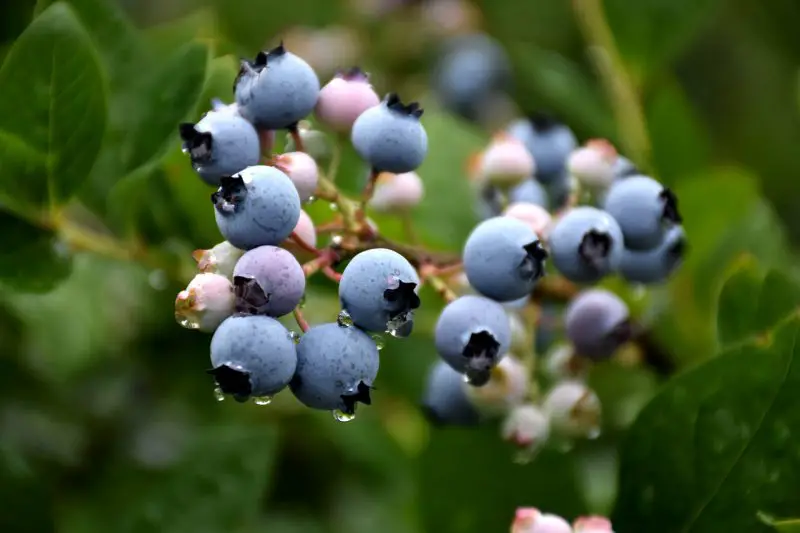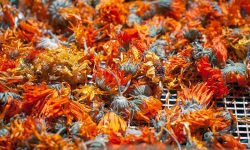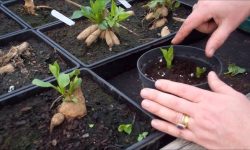Blueberry bushes are prized for their delicious fruit and vibrant foliage, making them a popular choice for home gardeners and commercial growers alike. However, to maintain healthy plants and maximize fruit production, pruning is an essential practice. Knowing when to prune blueberry bushes and how to do it correctly ensures strong growth, better yields, and longevity for the bushes.
Pruning blueberry bushes encourages new growth, removes old and unproductive wood, improves air circulation, and helps control the shape and size of the plant. Without regular pruning, bushes can become overgrown and less productive over time. This article will guide you through the best timing and techniques for pruning blueberry bushes, helping you achieve a flourishing and fruitful crop year after year.
Why Pruning Blueberry Bushes Is Important

Pruning is not merely about cutting back branches. It plays a critical role in maintaining the health and productivity of blueberry bushes. Over time, blueberry plants develop old, woody stems that produce fewer and smaller berries. Pruning removes these older canes and stimulates the growth of vigorous young shoots that bear more and larger fruit.
Pruning also improves air circulation within the bush, which helps reduce disease pressure, particularly fungal infections such as powdery mildew and botrytis. Properly pruned bushes receive more sunlight, which enhances photosynthesis and berry ripening. Furthermore, pruning controls the size of the bush, making it easier to harvest and manage.
When to Prune Blueberry Bushes for Optimal Results
The timing of pruning blueberry bushes is crucial. Pruning at the wrong time can reduce fruit production or cause stress to the plant.
Pruning in Late Winter or Early Spring
The best time to prune blueberry bushes is in late winter or early spring, before new growth begins but after the coldest part of winter has passed. This timing allows you to remove dead or damaged wood and shape the plant without disturbing the developing buds.
Pruning before the plant breaks dormancy encourages strong, healthy growth during the growing season. It also minimizes the risk of disease, as wounds have time to heal before warm, humid weather arrives.
Avoid Pruning in Fall or Late Summer
Pruning in fall or late summer is generally discouraged because it can stimulate new growth that does not harden off before winter. This tender new growth is vulnerable to frost damage, which weakens the plant and reduces yields the following year.
Identifying Which Branches to Prune on Blueberry Bushes
Effective pruning requires knowing which branches to cut and which to keep. Blueberry bushes produce the best fruit on stems that are between one and six years old.
Removing Old, Unproductive Canes
Old canes that are more than six years old tend to produce fewer berries. These stems are usually thick, woody, and grayish in color. Removing these older canes stimulates the plant to produce new, vigorous shoots that will bear more fruit.
Cutting Out Dead or Diseased Wood
Branches that show signs of disease, such as discoloration, lesions, or brittleness, should be removed to prevent infection spread. Dead wood is easy to identify because it lacks green tissue beneath the bark and may feel dry or crumbly.
Thinning Crowded Branches
Blueberry bushes can become overcrowded, leading to poor air circulation and shading. Thinning out crowded branches opens the center of the bush, allowing sunlight to penetrate and air to flow freely. This reduces disease risk and improves fruit quality.
Step-by-Step Guide to Pruning Blueberry Bushes Correctly
Pruning blueberry bushes is a skill that improves with practice. Following a systematic approach ensures you cut the right branches without damaging the plant.
Prepare Your Tools and Safety Gear
Start by gathering sharp, clean pruning shears or loppers for thicker branches. Using sanitized tools prevents the spread of disease. Wearing gloves and protective eyewear keeps you safe from scratches.
Remove Dead and Damaged Branches First
Begin by cutting out any dead, broken, or diseased wood. These branches do not contribute to fruit production and may harbor pests or diseases.
Cut Out Old Canes Near the Base
Identify the oldest canes, usually those that are thick and woody. Cut these stems back to the base of the bush to encourage new growth from healthy, younger shoots.
Thin Out Crowded Growth to Open the Center
Remove weak, spindly branches and those that crowd the interior of the bush. Aim to create an open, vase-shaped structure that maximizes light and air penetration.
Shorten Remaining Canes for Shape and Size Control
If canes are excessively long, prune them back to maintain a manageable size and shape. Cutting back promotes lateral branching, which leads to more fruiting sites.
Caring for Blueberry Bushes After Pruning
Proper aftercare supports the recovery and growth of blueberry bushes post-pruning.
Fertilizing to Support New Growth
Apply a balanced fertilizer formulated for acid-loving plants shortly after pruning. This provides nutrients that encourage vigorous shoot development and abundant fruit production.
Watering and Mulching
Consistent watering is vital, especially during dry spells, to help the bush recover. Mulching with pine needles or wood chips maintains soil moisture, regulates temperature, and suppresses weeds.
Monitoring for Pests and Diseases
After pruning, inspect bushes regularly for signs of pests like aphids or diseases such as powdery mildew. Early detection and treatment prevent serious damage.
Common Mistakes to Avoid When Pruning Blueberry Bushes
Mistakes in pruning can harm your bushes and reduce yields. Avoid pruning too late in the season, which can encourage vulnerable new growth. Over-pruning, or removing too many canes at once, stresses the plant and can limit fruiting wood.
Failing to remove dead or diseased wood allows problems to persist and spread. Using dull tools causes ragged cuts that heal slowly and invite infection. Lastly, neglecting to sanitize tools spreads disease between plants.
Seasonal Pruning Tips for Blueberry Bushes
While major pruning occurs in late winter or early spring, light maintenance pruning can be done during the growing season. Removing small, damaged shoots or spent flower clusters helps improve air circulation and directs energy to fruit development.
Fall cleanup pruning is generally avoided but may include removing severely diseased wood or fallen debris to reduce overwintering pests.
Encouraging Better Yields Through Pruning and Care
Pruning is just one part of successful blueberry cultivation. Combining pruning with proper fertilization, watering, soil pH management, and pest control ensures optimal growth and fruit quality.
Selecting cultivars suited to your climate and spacing plants adequately also contributes to a healthy, productive blueberry patch. Regular observation and care help you identify issues early and adjust your practices accordingly.
FAQs About Pruning Blueberry Bushes
When is the best time to prune blueberry bushes?
The best time to prune blueberry bushes is late winter or early spring, before new growth begins but after the coldest weather has passed.
How much should I prune my blueberry bushes each year?
Aim to remove about 20-30% of the oldest canes annually, focusing on dead, diseased, or unproductive wood to encourage vigorous new growth.
Can I prune blueberry bushes in the summer or fall?
Pruning in summer is possible for light maintenance, but avoid heavy pruning in fall to prevent stimulating tender growth vulnerable to winter damage.
Why are my blueberry bushes getting overgrown despite pruning?
Overgrowth can occur if pruning is inconsistent or only minimal. Regular, proper pruning each year keeps bushes manageable and productive.
Do I need to disinfect pruning tools when pruning blueberry bushes?
Yes, sanitizing pruning tools before and after use helps prevent the spread of diseases among plants.
Conclusion
Pruning blueberry bushes at the right time and with the right technique is key to maintaining healthy plants and maximizing fruit production. Late winter or early spring pruning encourages vigorous new growth and removes old, unproductive canes. By removing dead and diseased wood and thinning crowded branches, you improve air circulation and light penetration, reducing disease risk and improving berry quality.
Proper aftercare, including fertilization and watering, supports the plant’s recovery and continued growth. Avoiding common pruning mistakes ensures your bushes remain strong and fruitful for many years.
With consistent and careful pruning, your blueberry bushes will thrive, producing abundant, sweet berries that make gardening rewarding season after season.






